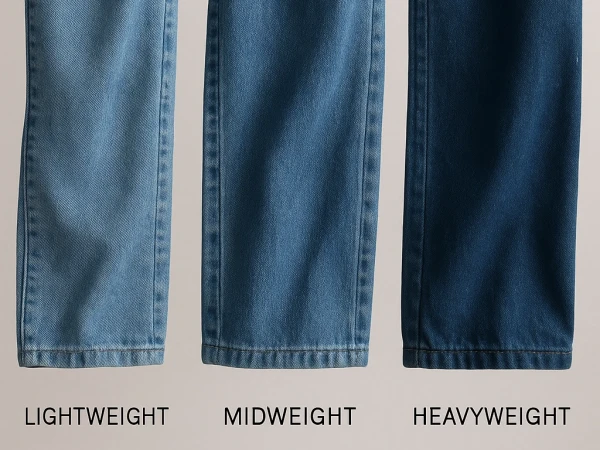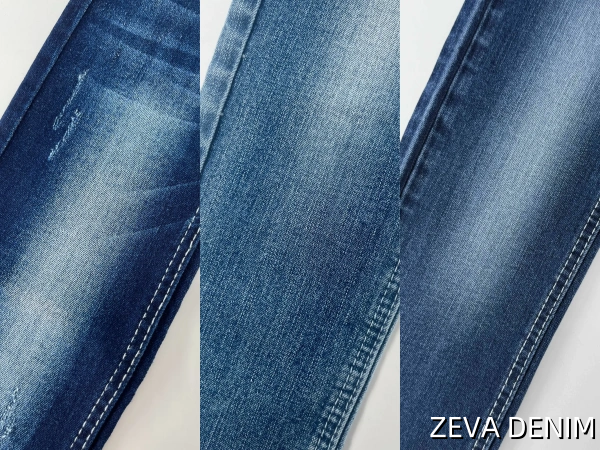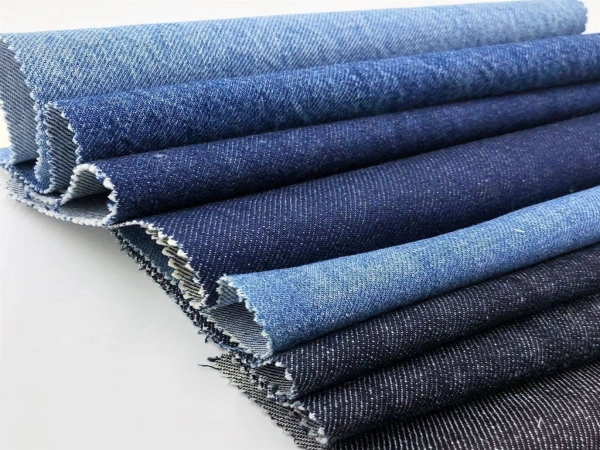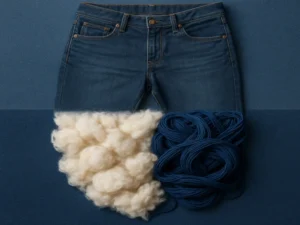Denim is more than just a fabric—it’s a foundation for some of the most iconic garments in global fashion and workwear. Whether you’re a designer, sourcing manager, brand owner, or fashion student, understanding denim’s structure and variations is essential to making informed product and sourcing decisions.
In this ultimate guide, we’ll walk you through the following key areas:
- What denim fabric is and how it differs from other materials
- The main types of denim based on stretch, composition, and sustainability
- How denim weight affects garment performance and comfort
- Different denim weaves and their impact on texture and appearance
- Important characteristics like shrinkage, stretch, fade, and color
- Innovative and specialty denim styles shaping the market
- A practical buying guide for fabric selection
- A trusted supplier recommendation to help you source with confidence
1. What Is Denim Fabric? A Quick Overview
Denim is a sturdy woven fabric, traditionally made from 100% cotton, featuring a twill weave with diagonal ribbing. Most denim fabrics are dyed with indigo, giving them the classic blue appearance. Originally developed for workwear due to its durability, denim has evolved into a premium fashion staple.
Key denim terms:
– Denim = the fabric
– Jeans = the garment made from denim
– Twill = the weave structure that gives denim its texture
2. Types of Denim Fabric (By Composition & Stretch)
Denim varies greatly in how it’s constructed. Here are the most common categories:
\

– Rigid Denim: Made from 100% cotton, no stretch. Great for classic jeans, raw denim, and structured silhouettes.
– Stretch Denim: Includes 1–3% elastane or Lycra. Common in women’s skinny jeans and comfort-fit men’s jeans.
– Super Stretch Denim: Contains over 4% stretch fibers for leggings or jeggings.
– Blended Denim: Cotton mixed with modal, Tencel™, or recycled fibers for softness and sustainability.
– Undyed Denim (Ecru): Offers a natural tone and clean, eco-minimalist aesthetic.
– Sustainable Denim: Organic cotton or post-consumer recycled content, often requested by eco-conscious brands.
Pro tip: Rigid denim fades beautifully over time; stretch denim offers more comfort but may sacrifice long-term aging character.
3. Denim Weights: How Fabric Ounces Affect Performance
Denim fabric is measured in ounces per square yard (oz/yd²). Here’s how different weights are used:

– Lightweight Denim (5–9 oz): Ideal for summer shorts, shirts, and hot pants. Feels soft and breathable.
– Midweight Denim (10–12 oz): Most common in everyday jeans. Offers balance between comfort and durability.
– Heavyweight Denim (13–16+ oz): Used for workwear, raw denim, and winter jeans. Rigid but long-lasting.
Example: Lightweight stretch denim (8.8 oz) is ideal for women’s hot pants, while 14 oz rigid is better for traditional work jeans.
4. Denim Weaves: Understanding Structure & Texture
The twill weave defines denim’s structure. Let’s break down the main types:

– 3×1 Right-Hand Twill: The most common denim weave. Dense, durable, and used in classic jeans.
– 2×1 Twill: A lighter weave, often used for shirts or skirts where softness matters.
– Left-Hand Twill: Weaves in the opposite direction, resulting in a smoother handfeel and slightly different fade patterns.
– Broken Twill: Zig-zag pattern that prevents leg twisting (used in Wrangler jeans).
– Plain Weave or Dobby Denim: Non-traditional looks used in fashion-forward or printed denim applications.
Note: The weave you choose influences the garment’s texture, drape, and visual character.
5. Characteristics of Denim: What Makes Denim Unique
Key properties that set denim apart:
– Color & Dyeing: Most denim is dyed with indigo, using either rope dyeing or slasher dyeing methods. Indigo only coats the surface, which leads to beautiful fading over time.
– Shrinkage: Raw denim may shrink after the first wash unless sanforized (pre-shrunk).
– Fade Behavior: Ring-spun yarns + rope dyeing = better fading.
– Stretch & Recovery: Elastane percentage + fabric construction = shape retention.
Always test stretch denim by stretching and releasing it—high-quality fabrics return quickly to shape without rippling.
6. Specialty Denims & Innovations
Modern denim goes beyond blue jeans. Popular specialty varieties include:
– Selvage Denim: Woven on shuttle looms with tightly bound edges. Loved by denim purists.
– Coated Denim: Features a waxy, leather-like finish. Used in edgy fashion collections.
– Printed Denim: Applied using pigment or digital print, ideal for statement styles.
– Performance Denim: Incorporates moisture-wicking, anti-bacterial, or stretch-recovery technologies.
– Metallic or Foil Denim: For glam or runway styles.
These innovations help brands create seasonal or niche collections with unique market appeal.
7. Practical Buying Guide: Choosing the Right Denim Fabric
Here’s how to match denim fabric to your product goals:
| Garment Type | Recommended Weight | Stretch | Weave |
| Skinny jeans | 9–11 oz | 2–4% stretch | 3×1 twill |
| Hot pants | 8–9 oz | 40–60% stretch | 2×1 twill |
| Jackets | 12–14 oz | rigid or low stretch | 3×1 |
| Shirts | 6–8 oz | light stretch or none | 2×1 or plain |
| Workwear jeans | 14–16 oz | rigid | 3×1 twill |
Additional Tips:
– Ask for washed samples to test color and softness.
– Inquire about MOQ and whether your supplier offers in-stock options.
– Check for certifications like OEKO-TEX®, GRS, or BCI if selling to eco-conscious markets.
8. ZEVA DENIM: A Trusted Source for All Denim Types
For brands, wholesalers, and garment factories seeking both variety and speed, ZEVA DENIM stands out as a reliable supplier.
Based in China, ZEVA DENIM integrates research, production, and marketing, offering over 200+ types of denim fabrics ranging from rigid to stretch, lightweight to heavyweight, and raw to washed. With:
– Small MOQ for in-stock fabrics
– Most styles deliverable in 7 days
– Competitive pricing for both mass-market and premium segments
ZEVA is ideal for those needing fast development, wide selection, and reliable quality in one source.
Visit: https://www.zevadenim.com
Conclusion: Why Understanding Denim Matters
Denim may seem simple at first glance, but the choices you make—from fiber to weave, weight, and finish—deeply affect how your final product looks, feels, and sells.
Whether you’re a brand owner choosing your signature fabric or a sourcing manager comparing mill offers, this guide gives you a solid framework to evaluate denim options with confidence.
To explore more styles and technical support, visit ZEVA DENIM—a supplier that bridges speed, quality, and global appeal in every roll of fabric.





